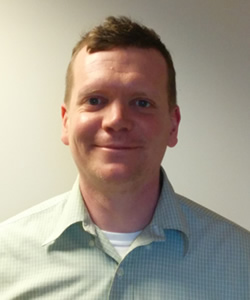It is an often-told story: Throughout the nineteenth century and into the twentieth, Catholics were held suspect by the Protestant majority. They were reviled and perhaps even feared, given their loyalty to a foreign power, the pope, which marked them as a dangerous outsider who threatened the American political order. As more Catholics poured in from Europe due to mass migration, such a threat became increasingly prominent.
And yet many Catholics—bishops and laity alike—yearned to prove their loyalty to their country of adoption, if not of birth. They often touted their Americanist convictions and took pains to demonstrate their patriotic fervor. In the post-World War II period, Catholics experienced various forms of economic, political, and social mobility that enhanced their status and decreased the social distance between them and Protestants. This provided the Church with an opportunity to grasp the long-sought after dream of becoming “American.”
The mainstreaming of American Catholicism brought benefits, but it came at a price.
The integration of Catholics contributed to what the sociologist Robert Wuthnow has referred to as the “decline of denominationalism,” through which adherence to a specific denomination diminished as a defining marker of religious identity. As tensions between discrete Christian groups thawed, denominational structures no longer provided clearly defined boundaries that differentiated Catholics from Protestants, or even various Protestant factions from one another.
In its place, political ideology became increasingly important as a factor in determining who religious actors cooperate with in the public square. Consequently, it has become more commonplace for conservative Catholics to have more in common with conservative Baptists than they do with those who identify as liberal Catholics, and liberal Catholics with mainstream Protestants than they do with their conservative Catholic brethren. This points to a huge breach down the center of the Church that creates divisions within it that are difficult to navigate, not to mention transcend.
Further, as American Catholics become more fully integrated into an American milieu and internalized its logic, there is a natural tendency to become more closely aligned with that dominant culture. Some have argued that the liberal philosophical tradition on which the American political system is built, and which in turn infuses American life, is inherently at odds and corrosive of a Catholic worldview. Others have pointed to the ways in which traditional Catholic thought is in tension with that of the non-Catholic American culture through their contradictory conceptions of freedom, and that an embrace of such a culture would further undercut Catholic identity.
If such assessments are true, it is hard to figure a way forward for the Catholic Church in the United States which, on a practical level for many of its adherents, has become thoroughly embedded in the political and cultural mores of American life.
Regardless, further contributing to the challenges confronting the Church today is the breakdown of traditional authority structures that had long helped to define Catholic identity. This breakdown is partly a reflection of the declining trust that Americans have with respect to authoritative institutions more generally. The sex scandal of the early 2000s also undermined the moral authority of the bishops, but even in its absence it is likely that their authority would have diminished among average churchgoers. This is so for at least a couple of reasons.
First, it is inherently difficult to maintain adherence to a hierarchically structured institution in a democratically oriented polis. Religions like the Catholic Church are consequently disadvantaged, particularly as an egalitarian ethic becomes a defining value in such a culture, as has occurred in the United States during at least the past half century.
Second, new communication technologies have democratized the flow of information, allowing what would have traditionally been fringe voices to amplify competing perspectives that would have been more easily marginalized in earlier epochs. This radical decentralization of power has enabled individual Catholics to be more selective to whom and to what they provide assent.
The highly politicized state of American religion, the potentially problematic philosophical underpinnings of American political thought, and the diffuse authority structures that are now manifest in contemporary Catholic life put at risk any cohesive sense of Catholic identity. It is this question of Catholic identity that requires greater attention moving forward.
While some sort of reformation might be necessary for this end, we now live in a period of fracture, which will require a retrieval of the tradition to which we all Catholics voice commitment. If so, to borrow the language of Vatican II, this might require a little less aggiornamento and a little more ressourcement moving forward.

